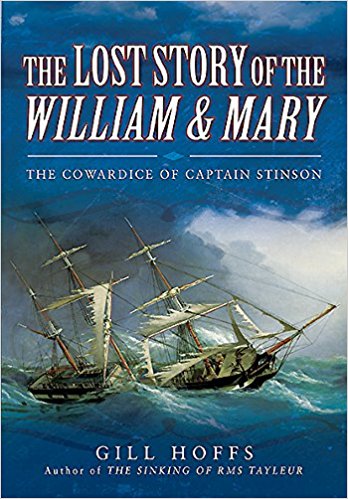Review: The Lost Story of the William & Mary March 26, 2017
Author: Beach Combing | in : Modern , trackbackThere is a new series of history books, products of the internet age, that have amateur historians putting together works that are, often, better than those by professional historians. The reason for the success of these amateurs is simple. They concentrate on contemporary sources, sources that are now increasingly available online for those ready to search, writing with the values and often the elegance of their nineteenth-century predecessors. Gill Hoffs’ The Lost Story of the William & Mary is very much part of this emerging tradition. The book describes a disastrous (though not catastrophic) Atlantic crossing, which came to grief in the Bahamas in 1853. GH has stretched the few contemporary documents that we have for this event, newspapers and diaries in Dutch, to breaking point, but the book works. Admittedly, GH resorts to the stratagem of finding different but similar events from other boats, employing these to give atmosphere. Here we see, though, her art. These supplementary passages add tension to the claustrophobic holds of the William and Mary. The details are difficult to forget: making pancakes in rinsed out chamber pots, pig faeces dripping on sleeping crewmen’s faces, a ring thrown at a fleeing husband and a fork… (Even if Beach, in the rages of some future dementia, forgets everything else about this book, he’ll still remember the fork. Let’s hope it is still rattling at the back of some drawer in middle America, a long way from the sea that almost consumed it.)
There have been tens of thousands of seawrecks in history. What marks the William and Mary out is that, and Beach is giving nothing away here as it is in the subtitle, the captain abandoned the vessel with most of the crew, leaving those on board to perish. The principle that the captain is the last to leave a sinking ship is crucial: it is a reminder in some of the most dangerous places on our planet – the oceans – that hierarchies are about responsibilities and inconveniences as well as privileges and perks. One of the most enjoyable things in the book is GH’s incandescent rage over the captain’s yellow streak: in her summing up she even raps him on the knuckles by giving him his full name ‘Captain Timothy Reirdan Stinson’ like a pissed off elementary teacher. She is arguably, as she partially recognizes in the introduction, anachronistic in being so annoyed that Stinson escaped without judicial punishment: this was an age when honour and shame were real and where those who broke the laws of ‘decency’ were punished by one and all. The fact that Stinson moved to landlocked Illinois tells us everything we need to know… (Their world was far better, but far far worse than ours). But how common were these episodes of captains fleeing? Lord Jim (published 1899-1900) is, after all, based on a real event: a captain leaving the sinking S.S. Jeddah in 1880 with scores of Muslim pilgrims still abroad. Jim, in Conrad’s novel, made a split second decision, which ruined his life until his unlikely redemption. Captain Stinson manipulated and planned for his escape over the course of hours. He broke promises and, then lied, once rescued. His plan depended on those on board drowning.
Now for a final ritual criticisms of this excellent book. Beach has run into Gill on Twitter and she seems a fun cove: the picture at the back of the book risks making her look like a morose survivor from the William and Mary…!
Beach is always interested in good books: drbeachcombing At yahoo DOT com



